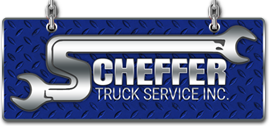Understanding Truck Steering Issues
Your truck’s steering system is one of the most important components when it comes to safety and performance. If your truck steering isn’t operating correctly, it can make driving dangerous and put added strain on other systems. Knowing how your steering works and recognizing signs of failure early will help you avoid costly breakdowns and accidents.
How the Truck Steering System Works
A truck’s steering system translates the motion of your steering wheel into the movement of the wheels on the road. Most modern trucks use a power steering system, which relies on hydraulic or electric assist to make turning easier. The steering wheel connects to the steering gearbox, which then directs linkages, tie rods, and ball joints that turn the front wheels.
For heavy-duty trucks, this system must handle significant weight and stress, making proper maintenance essential. If any part wears down, the whole system can become compromised.
Signs of Truck Steering Failure
Your truck will usually give you warnings when the steering system is in trouble. Some of the most common signs include:
- Difficulty turning the wheel – This can indicate low power steering fluid, pump failure, or damaged steering components.
- Steering wheel vibration – Often caused by worn tie rods, ball joints, or alignment issues.
- Loose or wandering steering – If your truck drifts or feels unstable, worn steering gear or linkage could be the culprit.
- Grinding or squealing noises – Noises while turning can point to low fluid levels, a failing pump, or worn bearings.
- Uneven tire wear – Misaligned or failing steering components can wear out tires quickly.
Why Addressing Steering Problems Quickly Matters
When it comes to truck steering, time is not on your side. Even minor steering issues can snowball into major safety risks and expensive repairs if ignored. Here’s why:
- Safety Comes First: Steering is what gives you control over your truck. If your steering wheel becomes stiff, unresponsive, or too loose, you could lose the ability to avoid hazards, stay in your lane, or make sharp turns when needed. On busy highways or during long hauls, this can put you, your cargo, and other drivers at risk.
- Preventing Further Damage: A small issue like low power steering fluid or a worn tie rod might seem manageable at first, but it can quickly cause additional damage to pumps, hoses, or the steering gearbox. What could have been a simple fix at our truck repair shop in Cape Girardeau may turn into a full steering system overhaul if left unchecked.
- Protecting Your Tires and Suspension: Faulty steering often leads to uneven pressure on your suspension system and wheels. This results in uneven tire wear, premature suspension failure, and costly replacements. By catching the issue early, a truck technician at Scheffer Truck Service can correct the alignment and extend the life of your tires and suspension parts.
- Avoiding Downtime: For truck drivers and fleet owners, time is money. A sudden steering failure on the road can leave you stranded, waiting on emergency repairs, and potentially missing deadlines. Preventive attention keeps your truck reliable and reduces costly downtime.
- Fuel Efficiency and Performance: Steering issues can cause your truck to work harder than it should, especially if it pulls to one side or requires constant correction. This not only wears you out as the driver but also reduces fuel efficiency over time.
Schedule Truck Steering Service at Scheffer Truck Service Today!
Your steering system is your direct connection to the road. Don’t ignore the warning signs. When you notice anything unusual with your truck’s steering, schedule an inspection right away. A qualified truck repair technician at our repair shop will have the tools and expertise to restore your truck’s safety and keep you moving with confidence.

